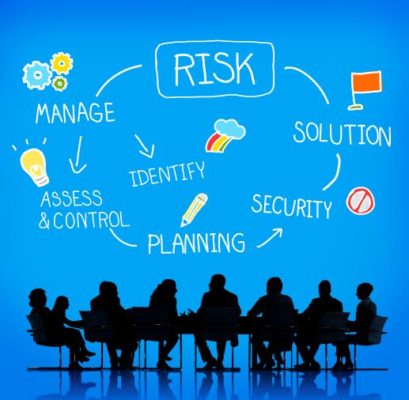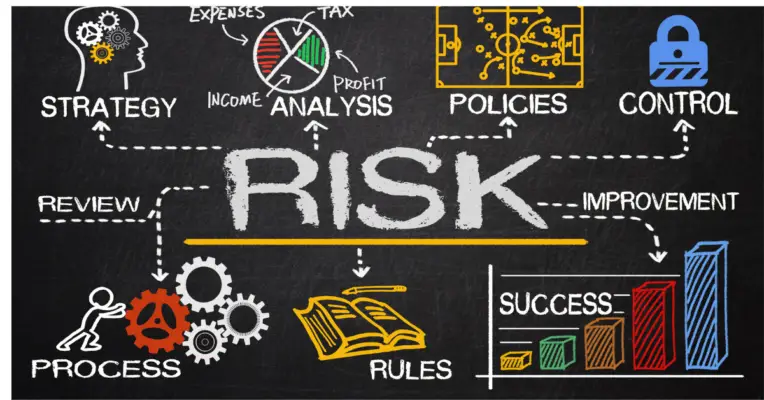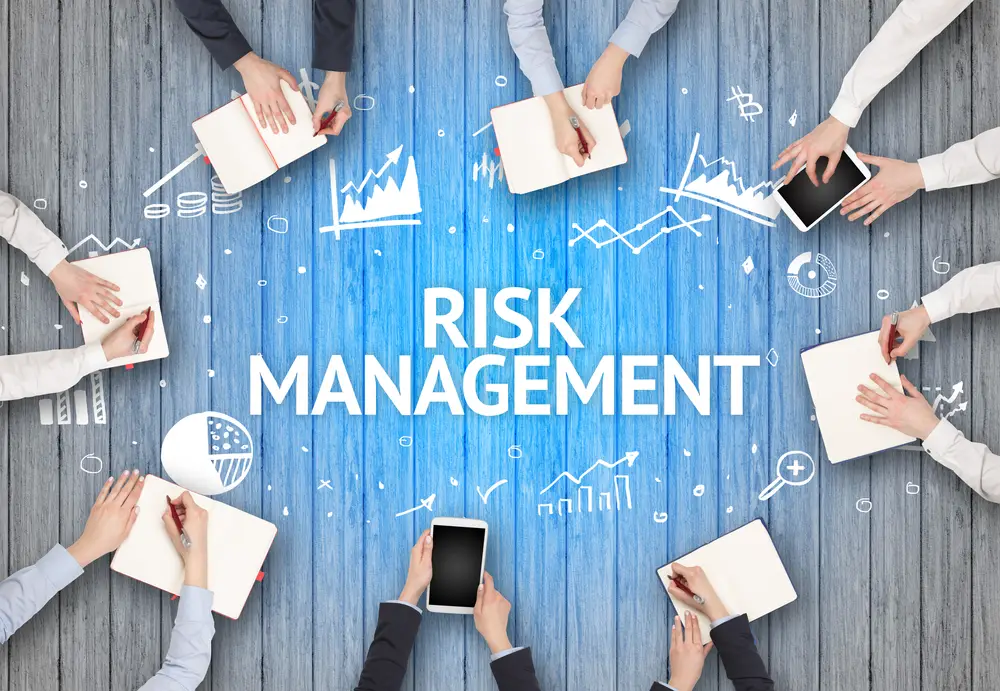Risk management is a fundamental aspect of any organization, as it helps to identify and mitigate potential risks that could affect the business. This involves developing strategies to manage risks associated with different areas of the organization, such as finance, operations, and human resources.
Risk Management is an ever-evolving, multidisciplinary concept that has become an integral part of our daily lives, whether we acknowledge it or not. It resonates in various forms – from our personal decisions to international business operations.
In the rapidly changing landscape of the 21st century, where uncertainties loom large and the margin for error is shrinking, understanding risk management is not just crucial, it’s indispensable.
This critical aspect of decision-making ensures our preparedness to face uncertainties, prevent disasters, and seize opportunities. Risk Management helps individuals, businesses, and even nations navigate the uncharted waters of uncertainty, facilitating both survival and growth.
Effective risk management is crucial for for-profit and not-for-profit organizations, as it helps ensure the organization meets its objectives and operates sustainably.
Risk can be defined as the possibility of harm or loss arising from a particular event or activity. Risk management involves identifying, assessing, and managing risks to minimize their impact on the organization.
This can include implementing policies and procedures to reduce the likelihood of risks occurring and developing contingency plans to mitigate any negative effects.
Effective risk management requires a systematic approach, with clear policies and procedures to manage risks consistently and effectively.
This blog post aims to demystify risk management, a term often perceived as complex and reserved for those in the world of finance or corporate strategy. Whether you’re a business professional, a budding entrepreneur, an enthusiastic investor, or a curious reader, a comprehensive understanding of risk management can empower you to make informed decisions and maximize gains while minimizing potential setbacks.

Importance of Risk Management in Business
The successful implementation of a comprehensive risk management strategy is essential for ensuring any business’s long-term viability and growth. Risks are inherent in any business; if not appropriately managed, they can result in significant financial, legal, and reputational damage.
Effective risk management allows businesses to identify potential risks, assess their likelihood and impact, and develop strategies to mitigate or avoid them. It also enables businesses to make informed decisions and achieve their objectives.
Effective risk management helps businesses to anticipate and prepare for potential risks, reducing the likelihood of negative outcomes and enhancing their ability to respond quickly and effectively.
Moreover, risk management is not only essential for for-profit organizations but also for not-for-profit organizations. Not-for-profit organizations also face risks, such as financial, legal, and reputational risks, which can affect their ability to achieve their mission and provide services to their beneficiaries.
Thus, it is crucial for not-for-profit organizations to have a robust risk management strategy in place to identify, assess, and manage potential risks.
Steps Involved in Risk Management
The first step is identifying potential risks, which involves reviewing past incidents, conducting risk assessments, and identifying emerging risks. This step allows organizations to understand their risks and prioritize them based on their likelihood and potential impact.
The second step is to assess the identified risks, which involves analyzing the consequences of each risk and determining the likelihood of it occurring. This step helps organizations determine the level of risk they are willing to accept and develop appropriate risk mitigation strategies. These strategies can include risk avoidance, risk reduction, risk transfer, or risk retention.
The final step is to mitigate risks by implementing appropriate risk management strategies. This involves developing and implementing risk management plans, monitoring and reviewing risks, and continuously improving risk management processes.
Effective implementation of risk management practices can help organizations achieve their objectives and make informed decisions while minimizing the impact of unexpected events. Successful risk management practices can enhance an organization’s reputation and provide a competitive advantage.
Identifying Potential Risks
The initial phase of the risk management process involves identifying potential hazards and uncertainties that may impede an organization’s objectives. This step is crucial to preparing a contingency plan to help mitigate the risks and ensure business continuity in the face of unexpected events.
Potential risks can be identified by reviewing past incidents, conducting thorough risk assessments, and identifying emerging risks.
Reviewing past incidents can provide valuable insights into the types of risks that an organization may face. This can include identifying patterns in employee behaviour that may lead to incidents, analyzing data on accidents or near misses, and assessing the effectiveness of existing risk management strategies.
Conducting thorough risk assessments involves identifying the potential impacts of various risks and the likelihood of those risks occurring. This can be done through various methods, including surveys, interviews, and data analysis.
Identifying emerging risks is also an important part of the risk management process. This involves keeping up-to-date with changes in the business environment, such as new technologies, regulations, or consumer preferences.

Assessing Likelihood and Impact of Risks
This step involves evaluating a risk’s probability and potential consequences on the organization.
One way to assess the likelihood and impact of risks is by using a risk matrix. This tool helps organizations visually represent risks by plotting them against likelihood and impact.
The likelihood is usually represented on a vertical axis, with impact on a horizontal axis. Risks deemed highly likely to occur and significantly impact the organization are placed in the top right-hand quadrant of the matrix and given the highest priority.
Another important aspect of assessing the likelihood and impact of risks is understanding the interconnectedness of risks. One risk may trigger another, leading to a chain reaction that could have severe consequences for the organization. Therefore, it is essential to consider the potential knock-on effects of a particular risk when assessing its likelihood and impact.
Developing Strategies to Minimize or Eliminate Risks
Risk management strategies should align with the organization’s objectives, values, and culture.
As such, it is essential to establish a risk management framework that outlines the process for identifying, assessing, and responding to potential risks that may affect the organization’s operations, reputation, or financial stability.
One of the key components of developing effective risk management strategies is identifying potential risks and their potential impact on the organization. This involves conducting a thorough risk assessment, which can be done through various methods such as brainstorming sessions, surveys, or interviews.
Once potential risks have been identified, it is important to prioritize them based on their likelihood and potential impact. This will enable the organization to focus its resources on mitigating risks that pose the greatest threat to its operations.
Effective risk management strategies should also include developing contingency plans to minimize or eliminate the impact of potential risks. This may involve implementing measures such as establishing emergency response plans, developing crisis communication protocols, or implementing cyber security measures.
It is important to regularly review and update risk management strategies to ensure that they remain relevant and effective in today’s rapidly evolving business environment. By taking a proactive approach to risk management, organizations can minimize the impact of potential threats and safeguard their long-term sustainability.
Frequently Asked Questions
What are some common risks that businesses face?
Businesses face various risks that can impact their operations and bottom line. Some common risks include financial risks such as cash flow problems, market fluctuations, and currency exchange rates.
Operational risks include supply chain disruptions, employee turnover, and equipment failure. Cybersecurity risks are also becoming increasingly prevalent, with businesses vulnerable to data breaches and hacking attacks.
Regulatory and compliance risks can also pose a threat, as businesses must navigate complex laws and regulations to avoid penalties and legal action. Other risks include reputational risks, natural disasters, and unexpected events such as pandemics.
Effective risk management strategies can help businesses anticipate and mitigate these risks, protecting their long-term success and sustainability.
How does risk management differ for small businesses versus large corporations?
Small businesses and large corporations may face different challenges and approaches regarding risk management. Small businesses may have fewer resources and need to prioritize their risks based on their potential impact. They may also rely heavily on insurance to protect themselves from risks.
Large corporations, on the other hand, may have more resources for risk management and may have more complex risks to manage. They may have dedicated risk management teams and may take a more proactive approach to identifying and managing risks.
However, regardless of size, all businesses can benefit from effective risk management in achieving their objectives and making informed decisions.
Are there any industries or sectors that require more rigorous risk management?
Certain industries or sectors may require more rigorous risk management due to the nature of their operations.
For example, the healthcare industry involves significant patient safety and data privacy risks.
The financial sector deals with risks related to market volatility, fraud, and cyber attacks.
Similarly, aviation, construction, and mining industries involve high physical risks to employees and the environment.
In contrast, industries such as technology and consulting may have lower levels of physical risk but face challenges related to intellectual property and reputational risks.
Effective risk management is crucial for achieving organizational objectives and making informed decisions regardless of the industry or sector.

How has technology impacted risk management in recent years?
Technology has greatly impacted risk management in recent years by providing new tools and methods for identifying, assessing, and managing risks.
Data analytics, artificial intelligence, and machine learning have allowed businesses to understand better, predict potential risks, and develop more effective risk management strategies.
Additionally, advancements in cybersecurity technology have become increasingly important in protecting businesses from cyber threats.
However, the reliance on technology also introduces new risks, such as data breaches and system failures, which require their own risk management strategies.
Overall, technology has enhanced and complicated risk management, making it crucial for businesses to stay informed and adapt to new technological developments.
Can risk management be outsourced to a third-party provider?
Outsourcing risk management to a third-party provider is common among many organizations. By delegating risk management tasks to a specialized provider, companies can access expertise, resources, and technology that may not be available in-house.
However, it is important for companies to consider the risks and benefits of outsourcing carefully. While outsourcing can reduce costs and improve efficiency, it also involves relinquishing control over critical risk management decisions. Moreover, third-party providers may not have the same knowledge or commitment to the company’s goals as internal staff.
Therefore, a balanced approach that considers each organisation’s specific needs and circumstances is necessary when deciding whether to outsource risk management.

Conclusion
In conclusion, risk management is a critical aspect of any business, as it helps to identify and manage potential risks that could impact the organization’s objectives.
Effective risk management involves identifying potential risks, assessing their likelihood and impact, and developing strategies to minimize or eliminate them. This can include implementing insurance, health and safety laws, cyber security, workplace safety, and environmental management.
The board is crucial in overseeing risk management policies and frameworks, ensuring long-term sustainability and success.

Chris Ekai is a Risk Management expert with over 10 years of experience in the field. He has a Master’s(MSc) degree in Risk Management from University of Portsmouth and is a CPA and Finance professional. He currently works as a Content Manager at Risk Publishing, writing about Enterprise Risk Management, Business Continuity Management and Project Management.

